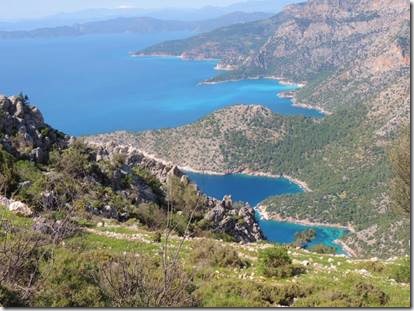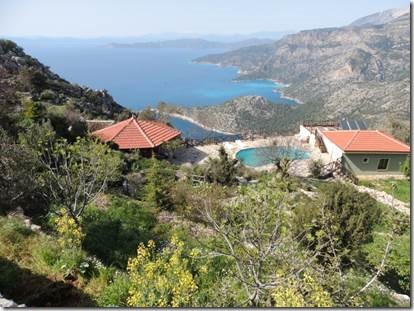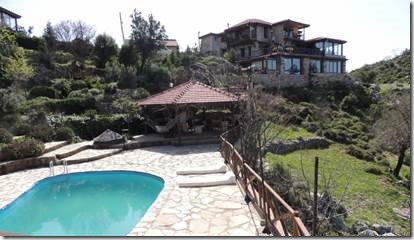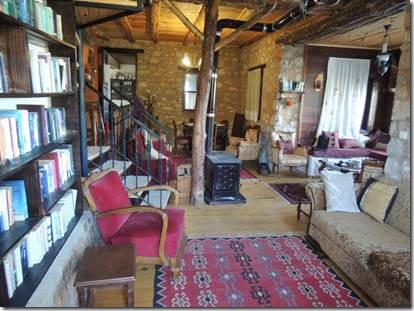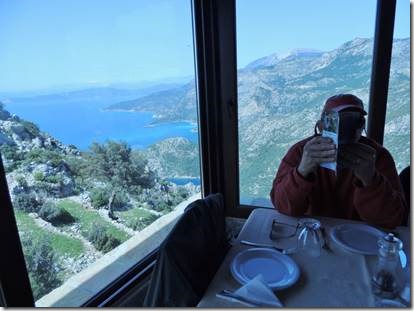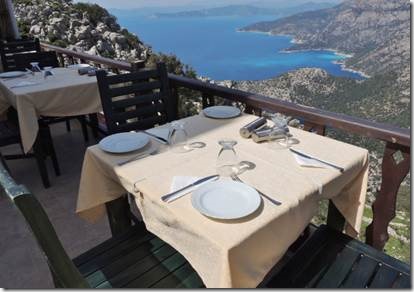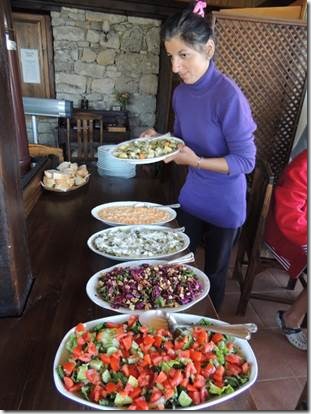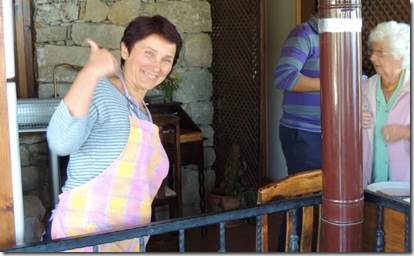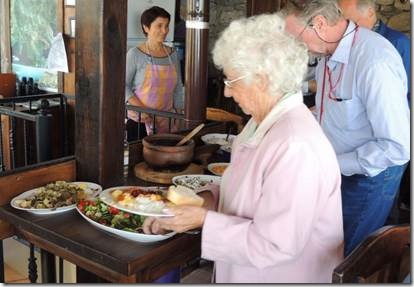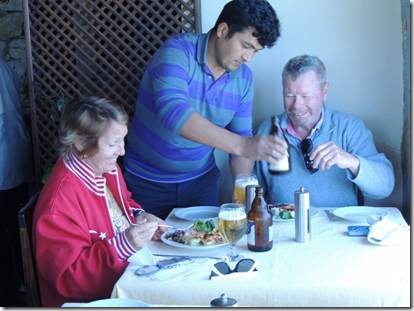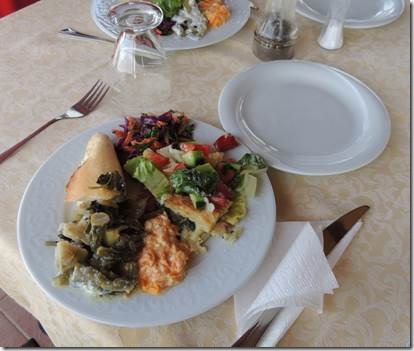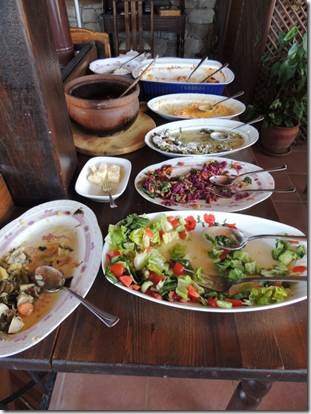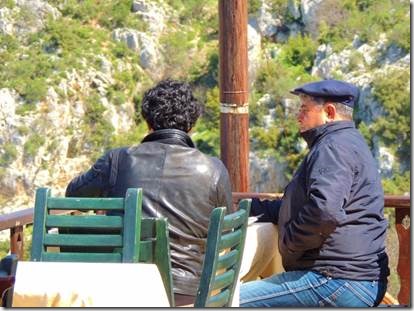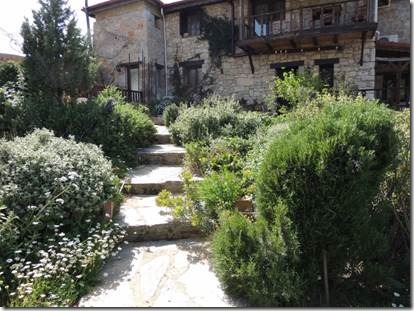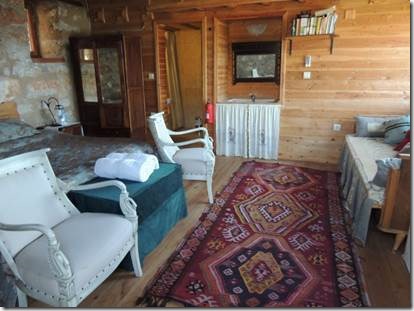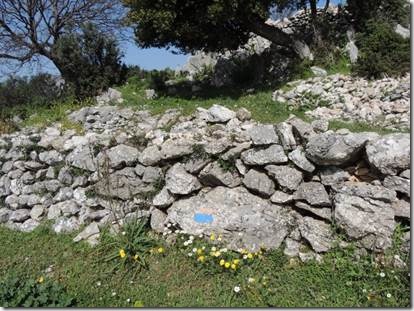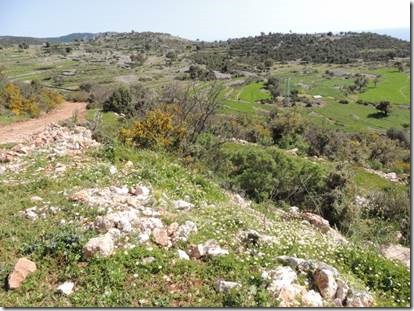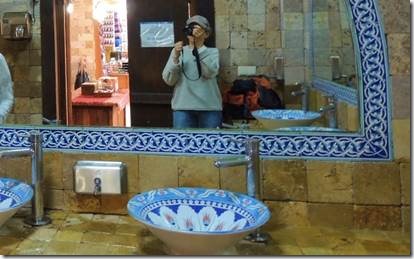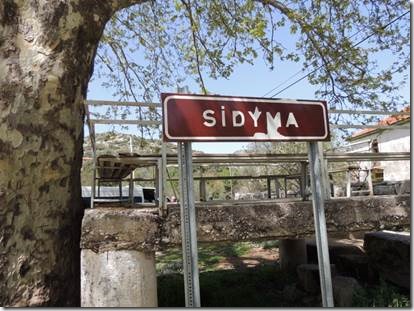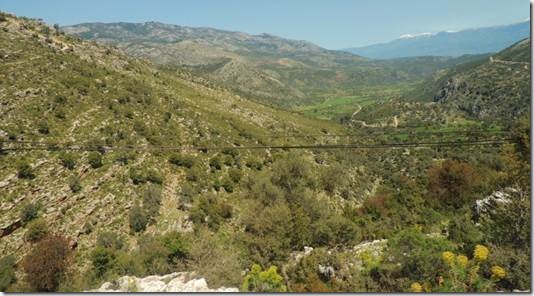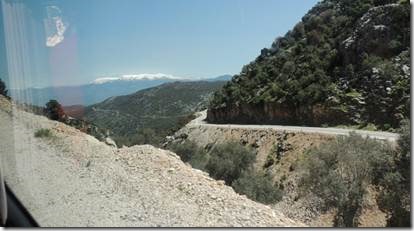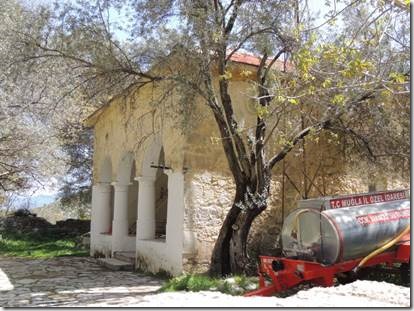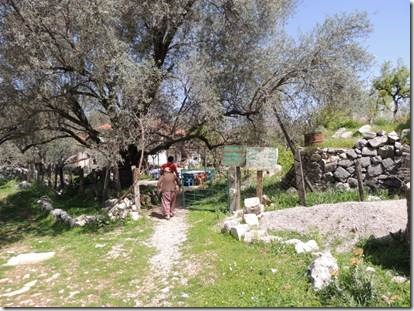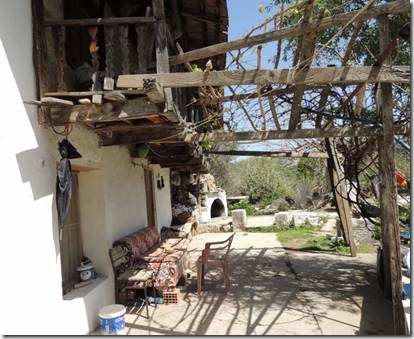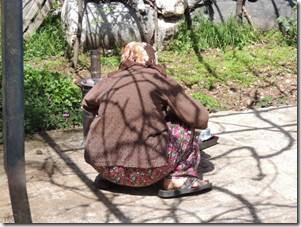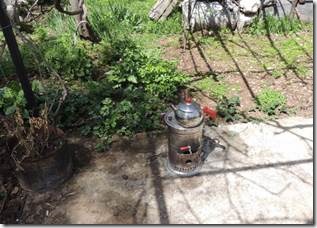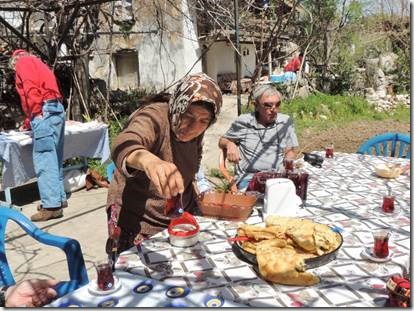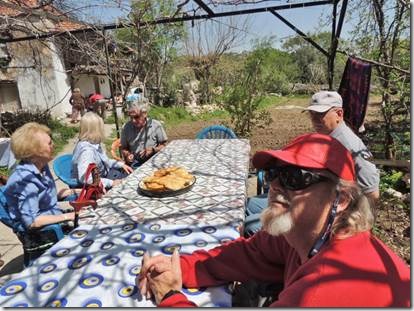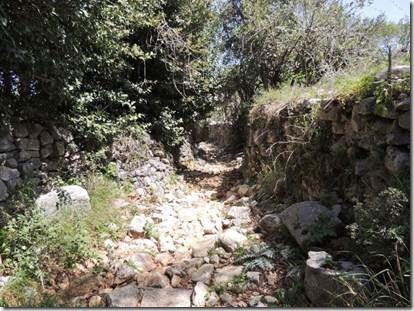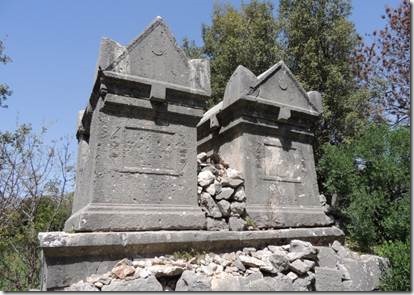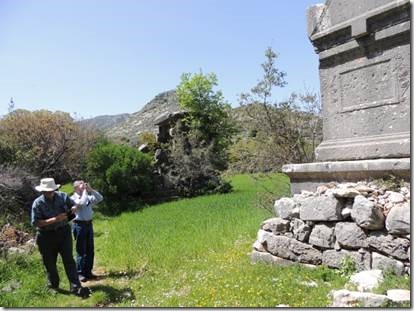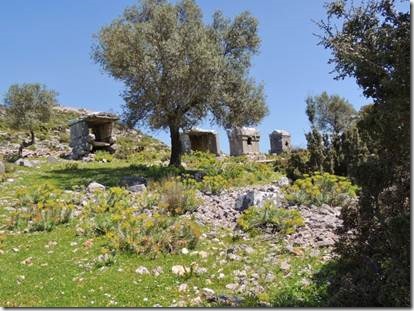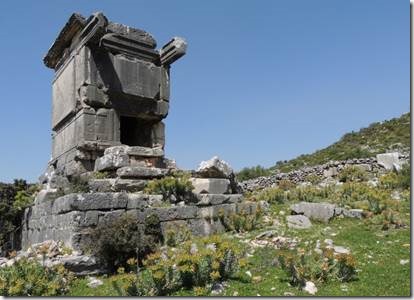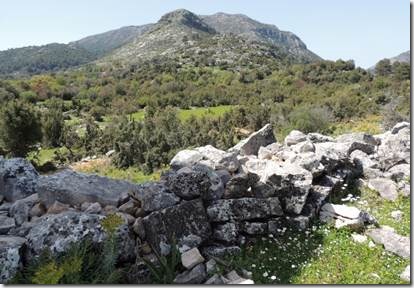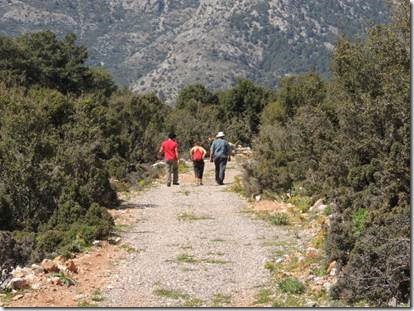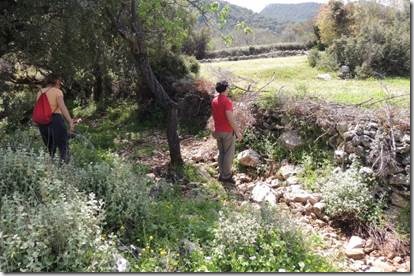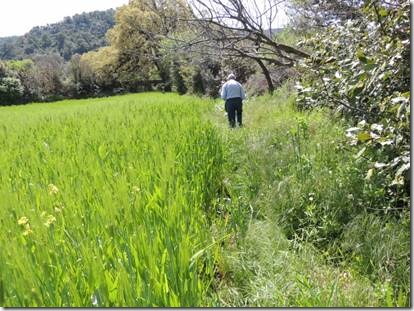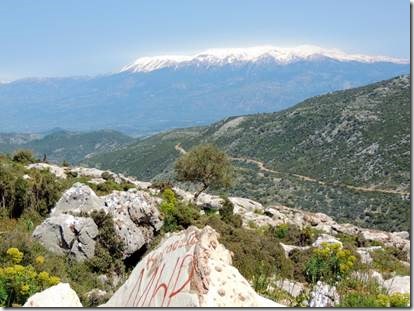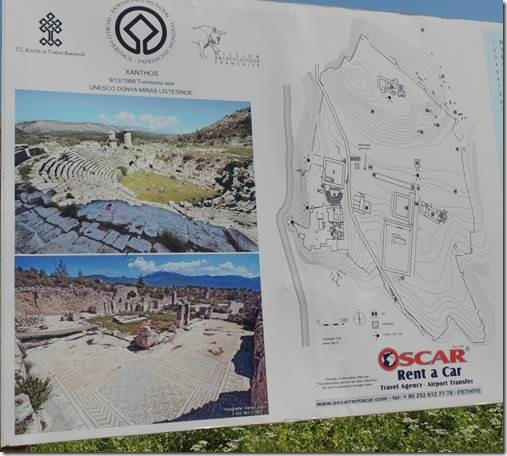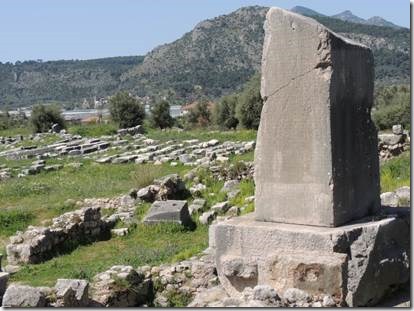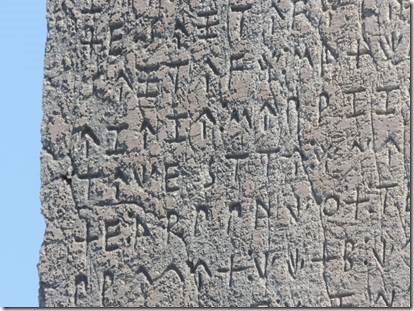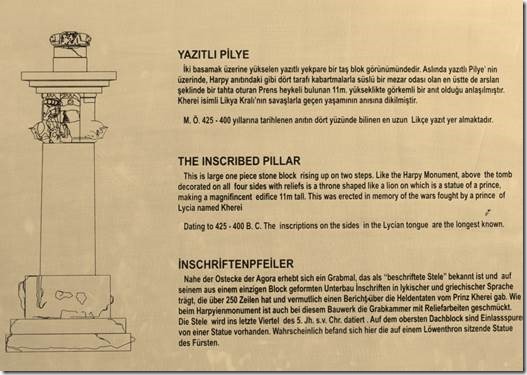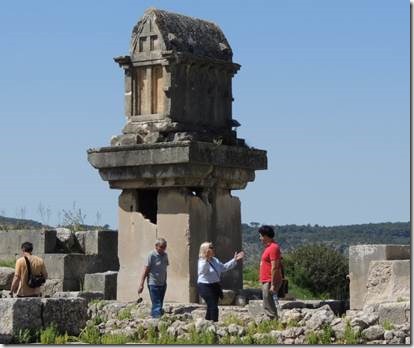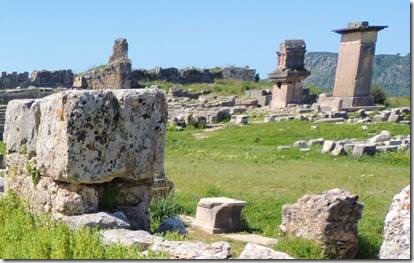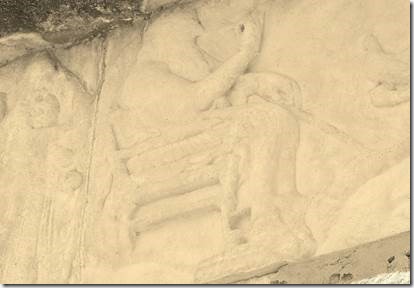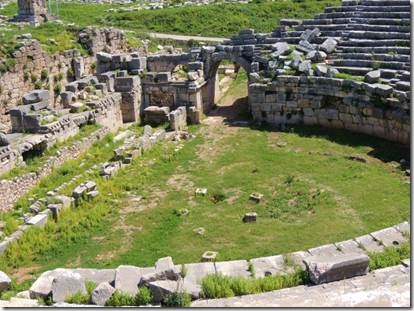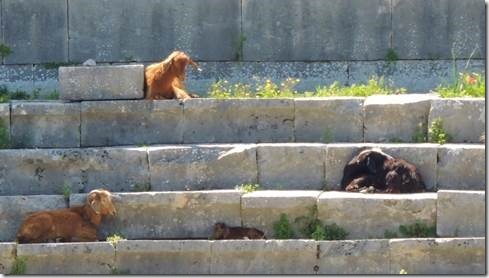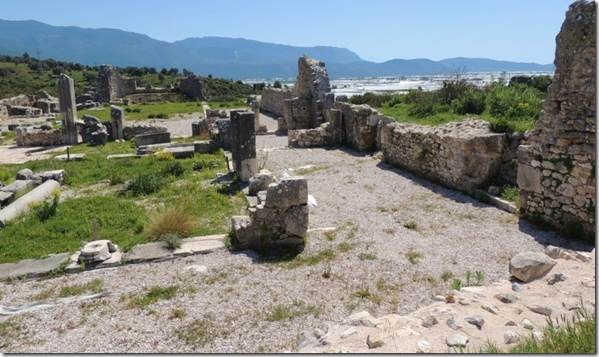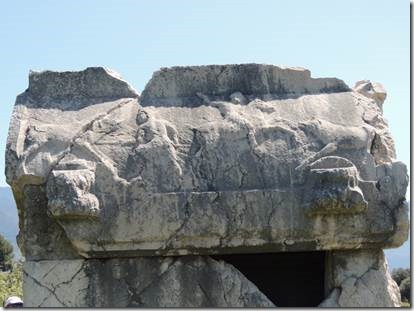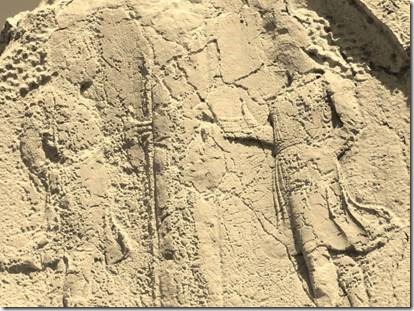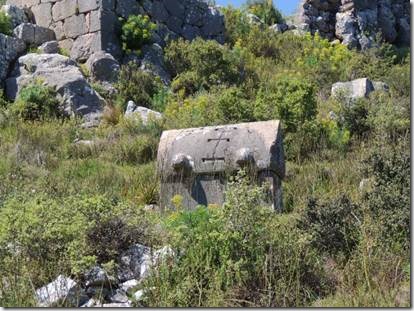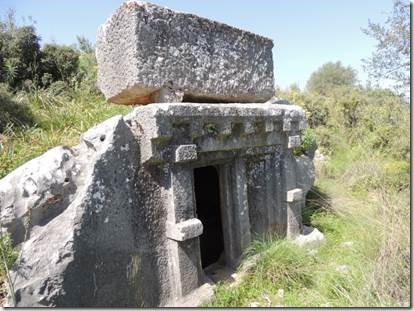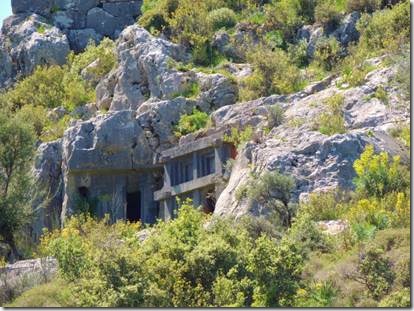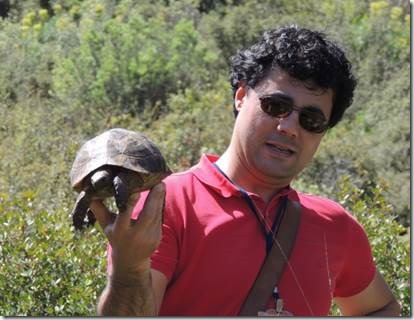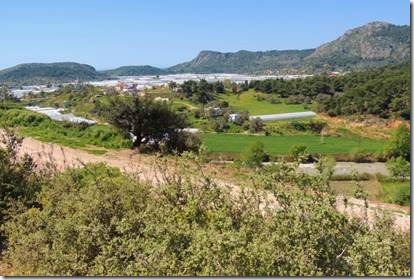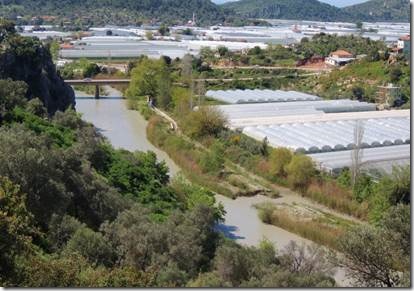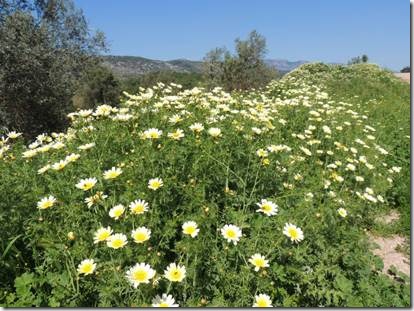Merhaba,
This is the final email of our mystery day. Notice there hasn’t been much food so far? Now it’s time for food.
Ru
Yediburunlar Lighthouse http://www.yediburunlarlighthouse.com/
Our final stop of the day was for lunch, or maybe a very early dinner! It was a spectacular location and since we’d had our gὄzleme and tea in Sidyma even I could hold out.
|
The view from the restaurant! Yediburunlar means seven noses. There are seven headlands and bays along this part of the coast, hence the name. “The Yediburunlar Lighthouse is located in the mountains, at an altitude of 570m, overlooking the sea on Turkey’s South West coast halfway between Fethiye and Kalkan.” From their website. 570 meters is about 1800 feet. Not sure where or if there really is a light house. We didn’t see one. |
|
The view from one of the free standing guest houses. |
|
Looking back towards the restaurant from the pool area. |
|
This room was in the main building and was really inviting…had we been overnight guests. |
|
The lighthouse is owned and run by Leon, a South African, and Semra, a Turk. They met on holiday near Antalya and found the site together, building it painstakingly by hand using traditional materials and methods. "We didn’t have any choice," says Leon. "There was nothing here – no water, no electricity, just stones." They’ve done an amazing job. It’s enough to bring one over all Kevin McCloudy, saying things about how the organic use of materials almost moulds the building to its landscape. And inside it is, if anything, even lovelier: all polished boards, old kilims and embroidered linens. There’s a generator now, for electricity, but still no water, so every couple of days Leon drives his truck 20 miles to a petrol station, fills it with water and drives back. Meanwhile, Semra cooks delicious, multi-course vegetarian feasts for their 12 guests. It’s as full-on a job as any could be. Their living space is in the room we eat in – which is presumably why they only eat with guests one night a week. I can’t say I blame them, but it makes me fear the communal dining experience all the more. In the end, though, it’s all quite jolly. I couldn’t do it for a week, and it’s not how I’d spend a romantic break à deux, but the food is delicious, everyone’s friendly and it gives me and my mum a break from bickering at each other. In the morning, Yediburunlar seems even wilder and more remote. The lush vegetation of Kabak and Faralya is a distant memory. It’s so much starker up here. Water is scarce and the land is rocky, every inch of it terraced and planted with olive trees, and flung here and there are bits of ancient detritus. We spot a vast Lycian sarcophagus in an olive grove and, sitting on the terrace for breakfast, I glance down beyond Leon’s latest piece of handiwork, a swimming pool perched on a ledge beneath the house, and notice rock tombs carved out of the cliff-face below. "Oh yes," says Leon, casually. "We have our own tombs." He has also mapped the surrounding paths so you can wander off by yourselves, which we do one day. On another, we join a Leon-led group on a walk up to the ancient site of Sidyma, a great unenclosed jumble of tombs and masonry, simply lying about the place. http://www.guardian.co.uk |
|
It was a bit breezy when we arrived so we did sit inside but you still had that spectacular view |
|
Outdoor dining would have been great earlier in the day. |
|
Starting to set out lunch for our group |
|
I believe this woman is the sister of the owner who was away in Istanbul |
|
Joan, who will be 88 soon prepares a plate for Bill who was sort of trapped behind the table. |
|
Ginny and Colin enjoying a cold beer with lunch |
|
I loved it all, even the spicy green beans though the cauliflower cheese dish was everyone’s favorite. |
|
We pretty much ate it all! I think there were about 14 of us plus Taṣ and our driver. |
|
Taṣ and our bus driver eating in peace |
|
Stairway from the main building down to the pool and to the guest houses. |
|
A peek into one of the small guest buildings, they have small fireplaces too. |
|
Markers to show the way to Yediburunlar. |
|
It was just a beautiful location. We then loaded back onto our minibus and headed for home, a couple of hours away. |
|
Atakὄy Our last “comfort stop” had a lovely “ladies” with Turkish pottery sinks. |

